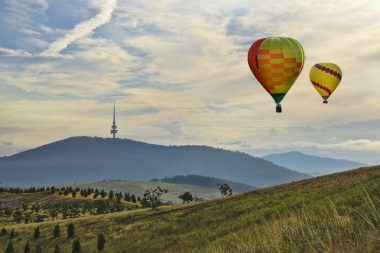
Brodie Fleming had been in her role as Director of Brand Canberra at the ACT government for about two years when she joined an online place branding and marketing conference.

It proved to be a pivotal moment.
“I was beginning to wonder if any of what I worked on was making any difference,” she said during an address at the Place Branding Australia 2024 Conference in Sydney last week.
“My screen flickered and the conference session started. It was called How to ensure your Place Branding and Place Marketing has a more Authentic Voice.
“That presentation changed how I was feeling about staying on my job, but also about what I thought was possible for Brand Canberra.”
That moment sparked the beginning of an ambitious citizen engagement project focussed on giving Canberrans an opportunity to tell their stories about their home in their voice.
Fast forward four years, and the Canberra Story is now being used to foster a sense of belonging, attract talent and tourists, boost the economy and take Canberra to the world.
Beyond the slogans
It wasn’t the national capital’s first foray into branding. Canberra had tried to do this before, with far less success.
Fleming said remnants of that campaign can still be seen around town in the form of car licence plates bearing the slogan “Feel the Power of Canberra”.
It was meant to be a reference to Canberra’s proximity to political power. Instead, “it came across as an ad for an energy drink,” Fleming said.
“Earlier efforts felt like they were trying too hard to say what we felt we should say,” she said.
“Words like ‘confident’, ‘innovative’, ‘bold’ kept popping up. But our city needed something more substantial than a slogan, more than a list of claims that any city could make.”
The Canberra Story project
The Canberra Story project got underway late in 2021.
The journey began by delving into Canberra’s history and most importantly listenting to the voices of Canberrans via a series of interviews.
“We spoke with people who lived in the suburbs and those in the heart of the city, with First Nations people, with entrepreneurs, journalists, public servants, teachers, sportspeople and trades people,” Fleming said.
“Each in-depth discussion lasted about an hour, drawing out interviewees’ experiences of being a Canberran.
We wanted to get beyond opinion and broad sweeping statements and push for personal stories, for memories and anecdotes. We wanted moments that illustrated real and memorable experiences of what it was like to live in Canberra.
Brodie Flemming
“We wanted to get beyond opinion and broad sweeping statements and push for personal stories, for memories and anecdotes. We wanted moments that illustrated real and memorable experiences of what it was like to live in Canberra.
“The team were looking and listening for common threads, moments of truth that we could weave together into one master story.”
The story emerges
What emerged was a story of a place where people shared a sense of purpose and aspiration, and wanted to create a space where ideas could grow. It was an expansive space surrounded by many gifts of nature; also a place of galleries, museums and festivals.
“Canberra is not finished, locked in or filled up,” Fleming said. “There is room for new people to find their community and make their place there. Even with all our open space, there is intimacy and familiarity.”
But the capital also harboured a shadow side. Fleming acknowledges that early residents often found Canberra sterile; sometimes disorientating and isolating.
“When a city’s business is government and administration, it can feel all function and process, a place where politics happens and not much else,” she said.
“People came reluctantly, just to get ahead on their careers, preparing to leave even before they arrived.
“Yet the spirit of this place worked on them , where some saw barren space they also saw the chance to create to plant something to grow.”
Canberra’s privilege also needed to be acknowledged as part of its story, and addressed.
“How are we listening to the less comfortable? In Canberra, we can be a bit too complacent and too comfortable. What are we doing to foster people’s ambitions and application?”
Fleming says the Canberra Story is providing a platform that’s enabled residents to feel a sense of pride, and is being put to work to attract workers, students and visitors to the capital.
Like all good excercises in place branding, the Canberra Story is a work in progress.
“There is still more to do. We’re exploring how to share the story, even further, making it known, and useful, but importantly owned by all Canberrans,” she says.
“So the work continues. Much like the city itself.”
Comment below to have your say on this story.
If you have a news story or tip-off, get in touch at editorial@governmentnews.com.au.
Sign up to the Government News newsletter
Canberra Branding problem is That it is not connected. In a paddock somewhere between Melbourne and Sydney
Its 3+ in a car from Sydney along the Sydney to Melbourne Track (Oops Road). All day by train and 2+ hours by Plane. and that’s from Sydney.
Wouldn’t want to start from somewhere distant.
Its high time that Canberra got a Very fast train service.
Then the Branding exercise would actually have some credibility